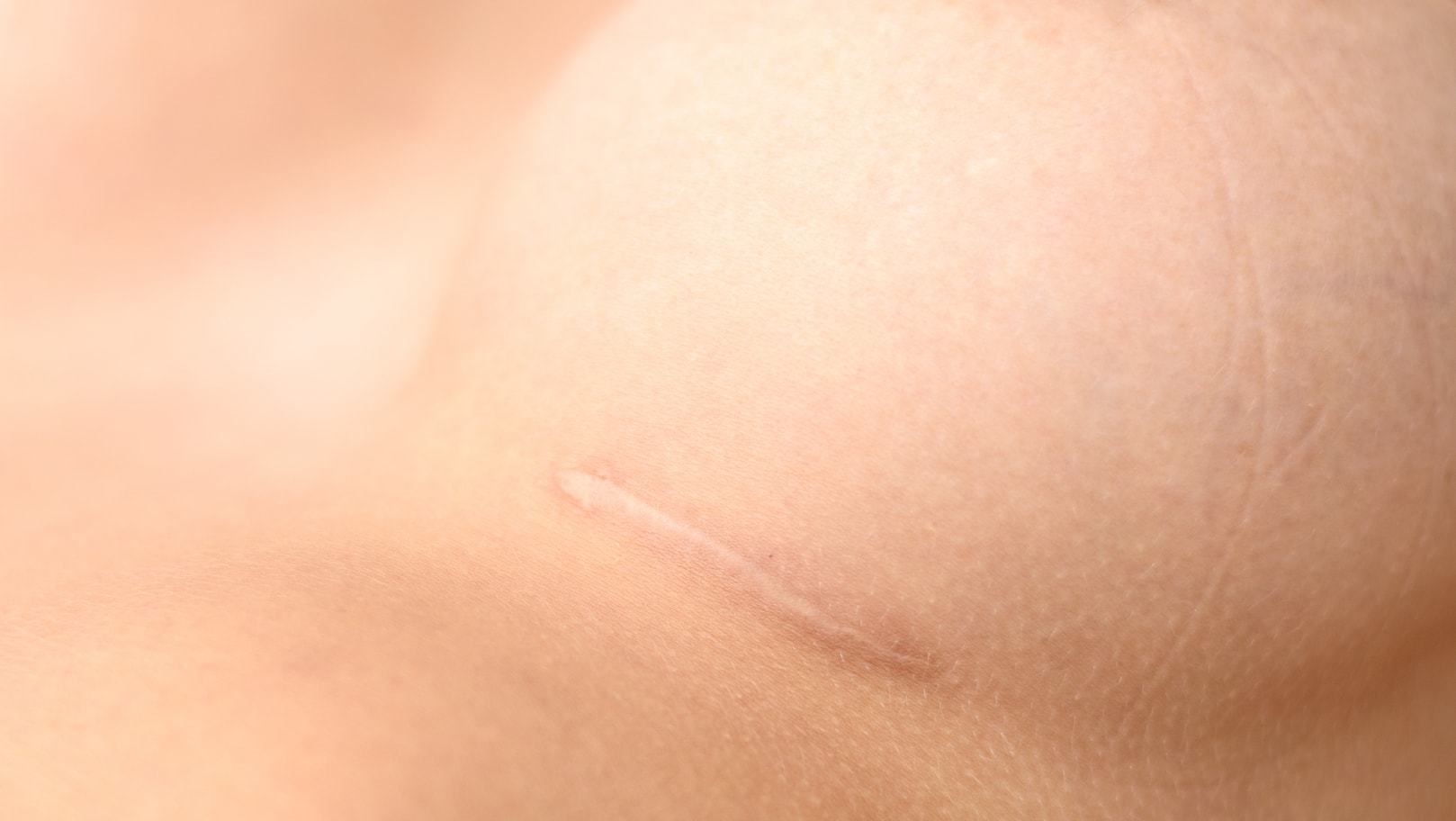
The type of breast augmentation incisions performed on a patient depends on their needs as well as the nature of their anatomy. There are four main incision types used in either breast enhancement or breast reduction:
- Inframammary
- Transaxillary
- Transumbillical
- Periareolar
Inframammary incisions are done in the skin fold of the breast where the lower part of the breast tissue connects with the chest wall. After the skin incision has been made and a pocket is created for the breast implant, a saline or silicone implant is inserted either above or below the breast muscle. This is quite possibly the most versatile scar technique on the list and is also the most common incision type used on patients. It has a great track record and is the standard incision currently used in breast enhancement procedures.
Transaxillary incision uses the natural folds of the armpit to conceal the scar. After making the incision, the surgeon creates a small channel to the breast and makes a pocket for the implant. Saline or silicone implants could be used but surgeons tend to have a preference towards saline since it comes deflated and is easier to put in place correctly. The great thing about this method is that it leaves the breast seemingly untouched because the scars are hidden in the armpit.
Periareolar incisions are made around the circumference of the areola. By following the natural line which separates the dark pigmentation of the nipple from the rest of the skin, surgeons are able make the resulting scar less visible and even completely undetectable. However, it is not generally recommended to use a teardrop shaped silicone implant. Shaped silicone implants needs to be placed perfectly and be meticulously adjusted before finalizing the operation. A periareolar incision makes this process more difficult so surgeons usually avoid using teardrop shaped implants for this technique.
A transumbillical incision, also known as TUBA, is likely the most limited technique used in breast augmentation. This method places the incision at the umbilicus or navel, which is essentially located inside the belly button. One good thing about doing it this way is that it leaves virtually no visible scar once the healing process is complete. However, the major limitation comes from the fact that only saline implants can be used because the implant has to be inserted deflated through the umbilicus. Silicone always comes pre-filled, which makes it impossible to fit through. Estimated Costs
The cost is generally unaffected by the incision type. In fact, most of the cost comes from the type of implant used (silicone or saline) in the operation. Depending on where the procedure is performed in the United States, and the extent of the procedure, breast augmentation generally ranges from $4,000 to $8,000 or more.
Using one incision type over the other does not minimize the risks of experiencing complications. In fact, any type of breast implant procedure can still cause a capsular contracture to occur. The only thing that seems to lessen the chances of capsular contracture from occurring is by placing the implant submuscular rather than subglandular.
Implant ruptures are also a concern but its safety risks are relatively low. Saline is simply a saltwater solution that is naturally produced in the body. If a saline solution breaks or leaks, it is absorbed into the body without causing any problems. Contrary to popular belief, silicone implants these days are actually very safe even if a rupture occurs. The silicone gel used in implants has been significantly improved and is more cohesive when compared to previous versions. This means the gel is rupture resistant and will not leak even when the implant is ruptured.
Another risk of breast augmentation is how it can affect breast-feeding. Although some women are inherently unable to breastfeed from birth, breast augmentation procedures have been known to damage or sever the milk duct preventing the patient from breastfeeding in the future.
The length of recovery varies depending on which incision technique was used in the breast surgery. The transumbillical and transaxillary methods are known to offer a 1-2 week recovery time on average. By using the naval as an entry point, the procedure is less invasive and does not require large portions of the skin to be cut which minimizes the overall recovery time. Inframammary and periareolar incisions usually take 7 days to heal in comparison. Regardless of which incision type patients choose they use should expect bruising, bleeding, and swelling.
Even after the bruises and incisions heal, it will still take time for the implants to settle and adjust to their final positions. This process can take a few months up to a full year. During this time, patients are encouraged to avoid any high impact activities or any weight lifting that targets the chest muscles for 6-8 weeks as the implants might displace.
Breast augmentation has never been a cookie cutter procedure. Each incision type is used to meet a patient’s specific needs and requirements. During consultation, the surgeon will evaluate the patient based on their needs and will recommend a treatment plan that will suit their anatomy. However, it is important for patients to have realistic expectations before going ahead with the procedure.
Written by Cosmetic Town Editorial Team- MA
Based on an exclusive interview with Dr. Newton Moscoe in Austin, TX